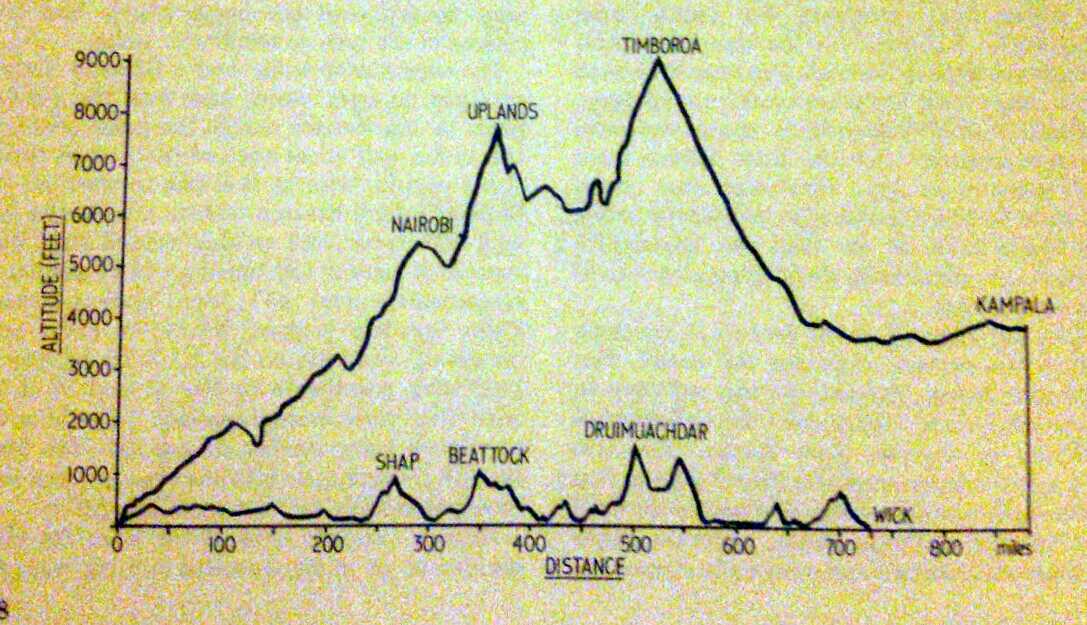There's some fascinating detail about East African Railways at the end of steam here, not by enthusiasts from Britain but by schoolboys of expat families at the "European" school in Nairobi, who had substantial experience of travel by the train in the 1950s-60s. Introduced to me by an OLd Boy now back in Britain. There's quite a bit of technical detail, along with a few classic schoolboy japes involving the train.
http://www.oldcambrians.com/Train4.html
Yes, I really enjoyed reading that through.
The 4th post in a series about Uganda Railways. This post covers the journey along the original Uganda Railway from Mazeras to Voi.
https://rogerfarnworth.wordpress.com/2018/05/17/uganda-railways-part-4-mazeras-to-voi
I have just returned from a trip to Africa, staying in south-western Uganda. This is the 5th part of my story of the Uganda Railway. It covers the length from Voi to Ulu in Kenya.
https://rogerfarnworth.wordpress.com/2018/05/21/uganda-railways-part-5-voi-to-ulu
Our journey along the 'Uganda Railway' continues. In this post we travel from Ulu into Nairobi and notice two branch-lines on the way.
https://rogerfarnworth.wordpress.com/2018/05/22/uganda-railways-part-6-ulu-to-nairobi
This next post focusses on the station at Nairobi and its immediate environment.
https://rogerfarnworth.wordpress.co...lway-station-good-yard-mpd-and-railway-museum
We are gradually getting closer to the eastern border of Uganda! This is the next post in the series and covers the strech of the line from Nairobi to Lake Naivasha .....
https://rogerfarnworth.wordpress.co...ys-part-8-west-of-nairobi-nairobi-to-naivasha
Another leg of the journey on the Uganda Railway.
https://rogerfarnworth.wordpress.com/2018/05/25/naivasha_to_nakuru
The next two posts cover the length of the old Uganda Railway to Kisumu and Butere. Originally, this line was of significant strategic importance. Trains along the line provided access to Lake Victoria and the inland steamers that then provided access to the Great Lakes region and to Kampala via Port Bell.
The construction of the line from Nakuru to Kampala and beyond changed thing significantly and the old main line became a branch-line and has seen little traffic over recent years.
https://rogerfarnworth.wordpress.co...ays-part-10-west-of-nakuru-the-line-to-kisumu
Before we return to Nakuru to follow the main line towards Kampala, one further post about the Kisumu line. There was a short branch which left the Kisumu to Nakuru line within the confines of Kisumu city. This post focusses on that line.
https://rogerfarnworth.wordpress.co...ways-part-11-the-branch-from-kisumu-to-butere
Back at Nakuru, we prepare ourselves to travel on to Kampala. This post takes us to Eldoret.
https://rogerfarnworth.wordpress.com/2018/05/27/uganda-railways-part-12-nakuru-to-eldoret
Eldoret is a junction station. The branch-line service to Kitale set off from Eldoret. We follow its route.
https://rogerfarnworth.wordpress.com/2018/05/28/uganda-railways-part-13-eldoret-to-kitale
We really are now almost in Uganda! The is the last post focussing on the Uganda Railway in Kenya. It takes us from Eldoret to the border with Uganda at Malaba.
Sadly, in this post there is little evidence of locomotives. The line has seen little use over the years. I was very fortunate to be able to travel 1st Class all the way from Mombasa to Kampala in 1994. I had no idea at the time how fragile that service was.
https://rogerfarnworth.wordpress.com/2018/05/28/uganda-railways-part-14-eldoret-to-malaba
With this post we have crossed the border between Kenya and Uganda. Just across the border in Tororo the mainline divides to give a Kampala/Kasese route via Jinja, and a Pakwach and Aria route via Soroti. The more northerly route through Soroti was perceived as the branch but it has been the route which has been refurbished first (in 2013).
We will follow the branch first.
https://rogerfarnworth.wordpress.com/2018/06/01/uganda-railways-part-15-malaba-to-soroti.

